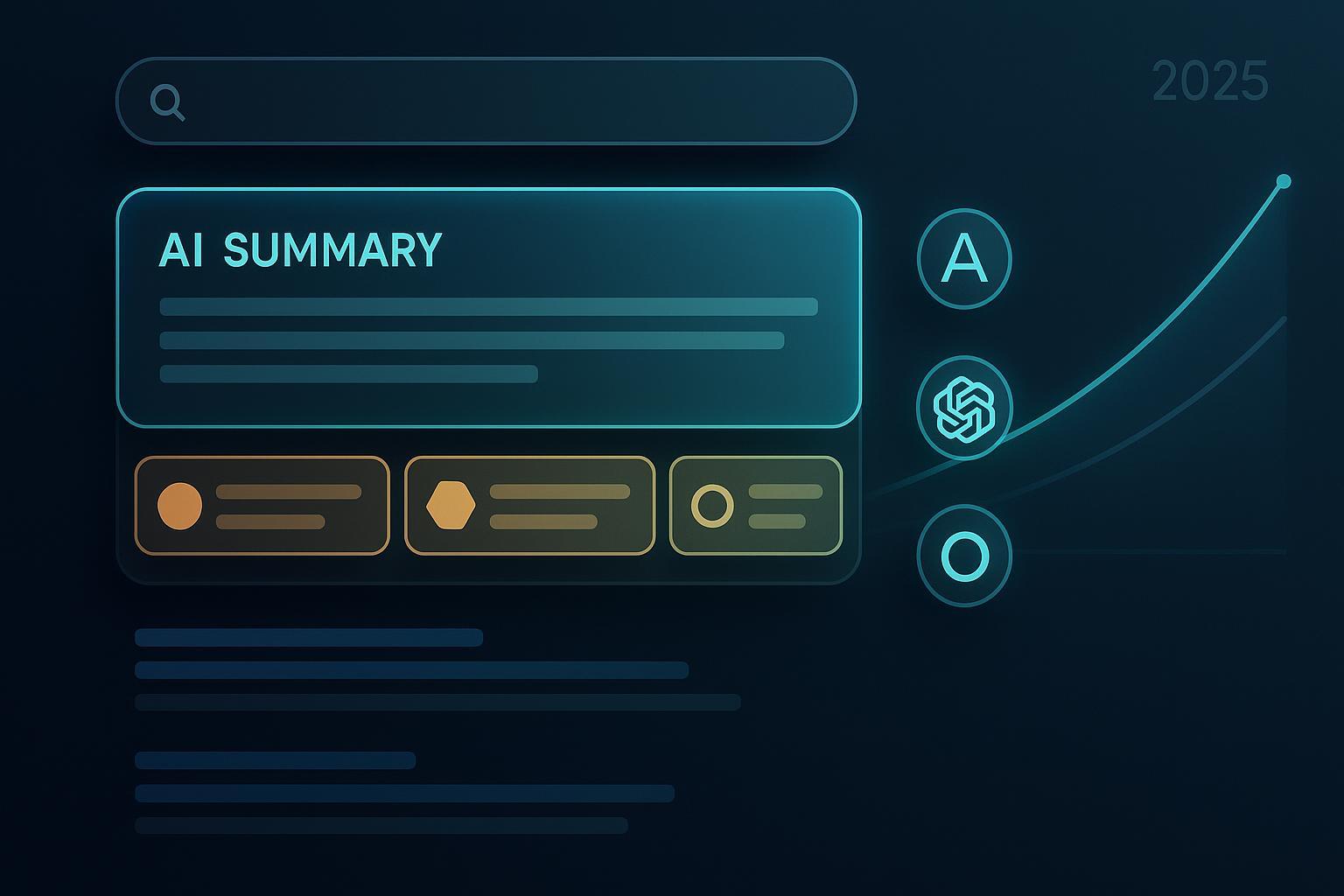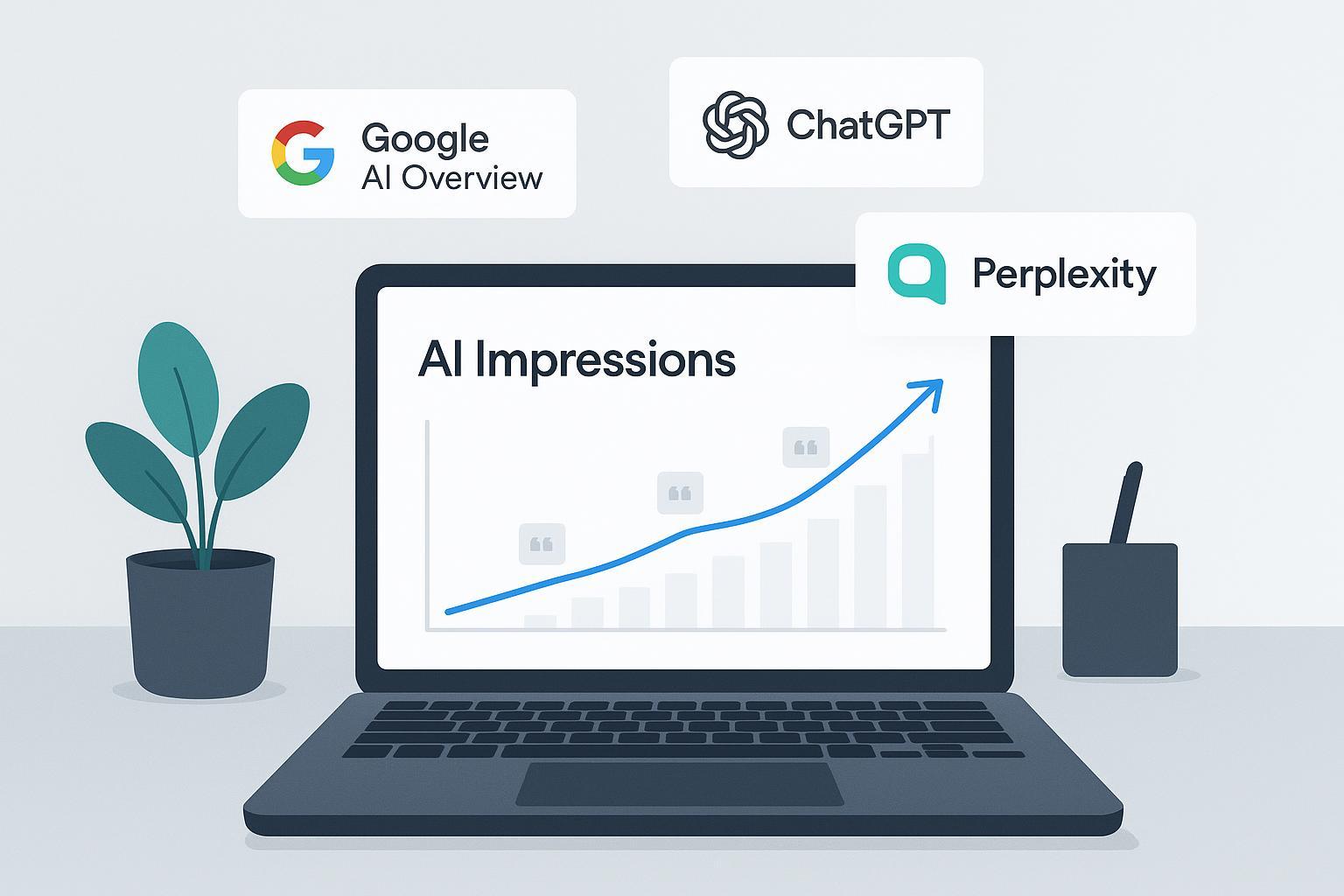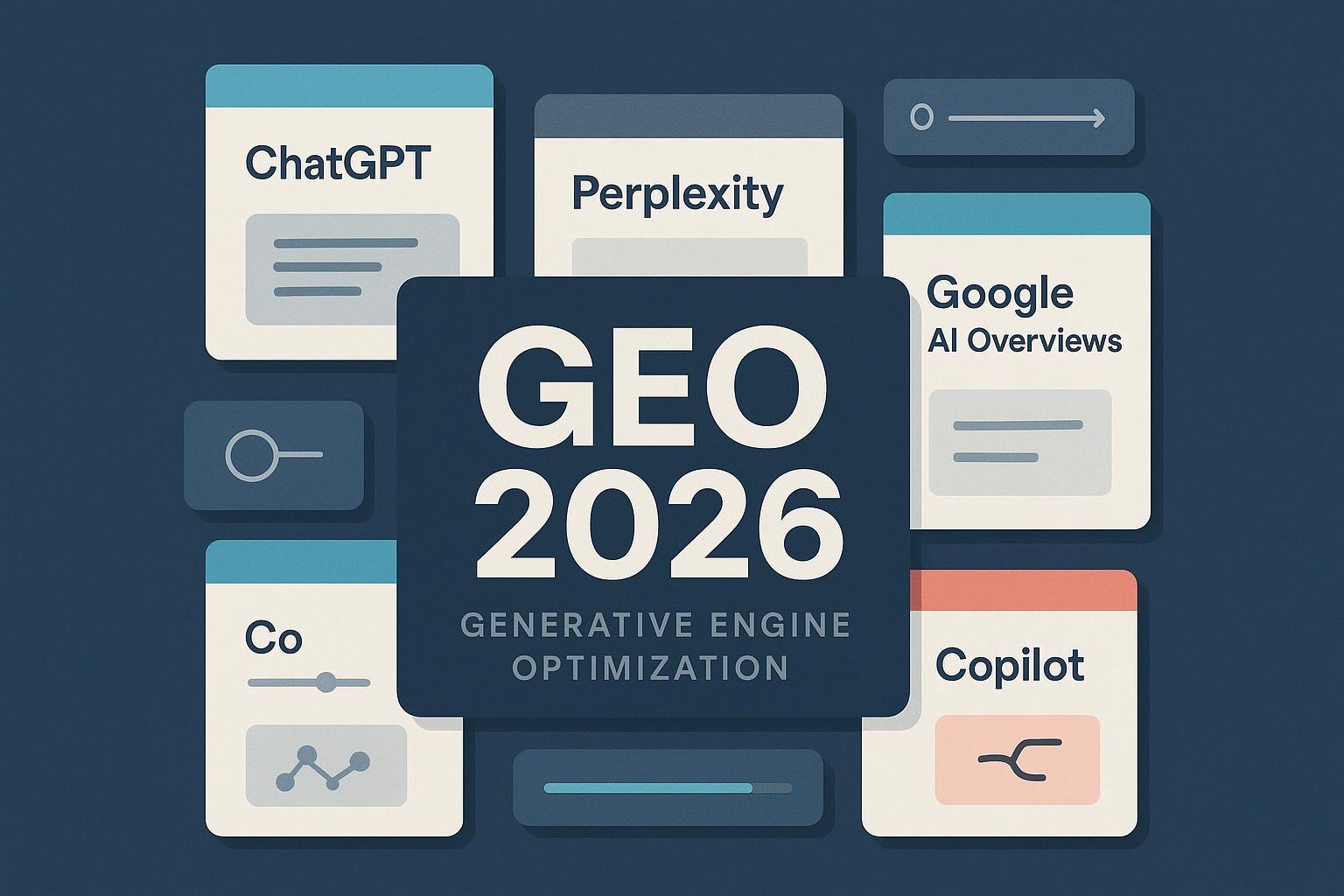Why Ignoring GEO in 2025 Will Tank Your Search Visibility
Backed by 2025 data: AI answers dominate search—ignoring GEO cuts clicks and visibility. See evidence and get actionable next steps for content creators.


Publishing in 2025 without a GEO strategy is like optimizing for featured snippets in 2016 and ignoring mobile: you might still get traffic, but you’re competing in the wrong arena. Generative answers now dominate prime real estate across Google’s AI Overviews/AI Mode, ChatGPT’s real‑time research experience, and Perplexity’s citation‑first results. The distribution game has shifted from ranking as a destination to being cited as a source inside AI-generated summaries.
GEO—generative engine optimization—is the discipline of making your content easy for AI answer engines to extract, verify, and cite. In practice, it blends extractability (clear, concise, structured answers), claim‑level grounding (verifiable citations), schema rigor, and authority signals beyond traditional SERPs.
What changed in 2025—and why it matters now
- Google broadened AI Overviews and introduced AI Mode as deeper, multi‑step responses that “fan out” related queries and present synthesized answers with supporting links. Google’s documentation explains how these AI features work and how they’re counted in reporting in the updated guidance from 2025; see the official overview in Google Search Central’s “AI features and your website” (2025).
- AI answer surfaces are growing and monetizing. Google confirmed at its 2025 marketing event that Search and Shopping ads appear within AI Overviews and are expanding into AI Mode, which changes attention dynamics at the very top of results; see Google’s Marketing Live 2025 recap.
- AI answers are no longer just a Google story. OpenAI folded real‑time web research and multi‑step “deep research” into ChatGPT, making it an answer engine in its own right. For technical context, review OpenAI’s “Introducing Deep Research” (2025).
- Perplexity is scaling as an alternative answer engine. Its CEO disclosed handling 780 million queries in May 2025, underscoring user adoption; see the Perplexity CEO’s 2025 statement.
Taken together, 2025 marks the first mainstream year where AI answers systematically alter visibility. If you aren’t citation‑eligible across these engines, you’re ceding the most valuable on‑page real estate.
The cost of ignoring GEO: evidence from 2025
- Users click less when AI summaries appear. In a July 2025 behavioral panel study of U.S. adults, Pew found that when an AI summary was present, users clicked traditional result links in 8% of visits versus 15% without summaries—roughly a 47% reduction—and were more likely to end sessions after seeing an AI summary. Review the methodology and findings in the Pew Research 2025 analysis of AI summaries and clicks.
- AI overview coverage is rising, especially for informational queries. Semrush/Datos reported that by March 2025, about 13% of U.S. desktop queries triggered an AI Overview, with longer natural‑language queries disproportionately affected. Details and query‑type breakdowns are in the Semrush/Datos 2025 AI Overviews study.
- Citations don’t map 1:1 to the top organic listings. SE Ranking’s July 2025 analysis found that while overlap with the top 10 is common, AI Overviews frequently draw from a broader set of sources, including UGC platforms, and include multiple links per answer. See patterns by niche and link counts in the SE Ranking 2025 AI Overviews report.
The implications are clear: a non‑trivial share of queries now resolve inside AI answer boxes, users often don’t scroll to blue links, and the winners are pages that AI systems can easily extract and verify—regardless of whether they’re the “classic” top organic result.
GEO in practice: how to be selected, cited, and trusted
GEO is not a rebrand of SEO. It complements traditional optimization with new requirements for extractability, verifiability, and answer‑surface readiness.
-
Structure for extractability
- Start with a crisp, one‑paragraph definition or direct answer near the top of the page.
- Use scannable blocks: numbered steps, bullet lists, and short Q&A/FAQ sections that mirror conversational questions.
- Include updated‑on timestamps and change‑logs to signal freshness.
-
Ground claims with citations
- Bind key statements to primary sources using descriptive anchor links. For statistics, state the year and scope in the sentence.
- Prefer original studies, official docs, and recognized authorities. Avoid vague superlatives and unsupported benchmarks.
-
Add schema rigor and E‑E‑A‑T
- Implement Organization, Article, FAQ, and HowTo markup where relevant.
- Publish author bios with credentials, and add a methodology section for data-heavy posts.
- Ensure crawlability for major AI/web fetchers and solid Core Web Vitals.
-
Build authority across surfaces
- Earn third‑party citations from reputable sites and standards bodies; AI engines weigh corroboration.
- Publish original assets—tables, diagrams, datasets, PDFs—that are easy to quote with attribution.
Engine‑specific nuances
-
Google AI Overviews / AI Mode
- Comprehensive coverage and freshness matter; update rolling topics promptly.
- For YMYL subjects, ensure expert authorship and consensus-aligned sources.
- Align on‑page FAQs with natural‑language queries that commonly trigger AI summaries per 2025 studies.
-
ChatGPT with deep research/agents
- Provide hub pages with scoped sub‑guides that fit multi‑step reasoning.
- Include clearly labeled “Summary” and “References” sections so agents can lift and cite.
- Host verifiable assets (downloadable tables, methodology docs) to support grounded answers.
-
Perplexity
- Write concise, citation‑ready paragraphs and definition boxes.
- Offer transparent source lists and original data/benchmarks to differentiate from generic summaries.
- Match titles/H1s closely to query phrasing to secure inline citations.
Measuring AI‑era visibility when analytics fall short
Search platforms don’t break out AI answer traffic cleanly, and Google’s reporting for AI features rolls into standard totals. The best path is to build a practical proxy model and watch patterns over time.
-
Panel tracking of answer citations
- Maintain a fixed keyword set. For each query, log whether an AI Overview appears and which URLs are cited.
- Track shifts weekly to correlate with content updates.
-
Log and crawler analysis
- Monitor access patterns from AI/LLM fetchers and relate them to subsequent appearance in AI answers.
-
UTM experiments and referral forensics
- Where referrals pass, use controlled campaigns to detect AI surface traffic.
- Correlate with branded search and direct spikes after content refreshes.
For a deeper walkthrough of multi‑platform tracking and cross‑industry examples, see our internal case compilation in 2025 AI search strategy case studies.
Example workflow: operationalizing GEO at scale
Here’s how teams can put GEO into production in a repeatable cadence.
- Identify your “answer‑ready” pages
- Prioritize topics where AI Overviews are common and where you can contribute unique data or clear how‑to steps.
- Restructure for extractability and grounding
- Add a 60–120‑word definition/answer up top, a concise steps list, and a FAQs block with conversational questions.
- Bind claims to primary sources and include a short “References” section with descriptive anchors.
- Monitor multi‑engine citations and iterate
- Track which pages appear inside answer boxes across Google, ChatGPT, and Perplexity.
- Log changes alongside release notes to learn which edits correlate with citations.
- Example tool stack (optional)
- Use Geneo to monitor whether your pages are cited in AI Overviews, ChatGPT, and Perplexity; log shifts over time; and surface pages needing schema or claim updates. Disclosure: Geneo is our product.
- Complement with your analytics suite, crawler logs, and a lightweight spreadsheet or dashboard for the panel.
Governance, cadence, and 2026 outlook
-
Governance
- Establish editorial standards for citations, schema, and update logs.
- Require author bios and methodology notes for data‑driven or YMYL content.
-
Cadence
- Quarterly GEO audits across your top categories.
- Monthly refreshes for the top 20% of pages by business impact.
- Rolling updates for volatile topics as models and trigger rates shift.
-
What to watch next
- Changes in AI Overview/AI Mode trigger rates by query type and geography, and any reporting granularity improvements.
- ChatGPT agent capabilities for deeper research tasks and the impact on how they select and cite sources; see OpenAI’s 2025 materials for direction of travel via Introducing Deep Research (2025).
- Perplexity’s retrieval and citation UX updates as usage scales; the CEO’s mid‑2025 disclosure of 780M queries suggests continued momentum—reference the original Perplexity 2025 CEO statement when benchmarking adoption.
Bottom line
In 2025, being visible means being citable. AI answer engines prioritize concise, verifiable, up‑to‑date content with clear claims and credible sources. Teams that ignore GEO risk losing visibility to pages optimized for extractability and grounding—even when those pages aren’t the “traditional” #1 organic result.
If you’re ready to operationalize this, start with a small GEO panel, restructure five high‑impact pages, and stand up weekly citation tracking. When you need a neutral way to monitor multi‑engine citations and spot opportunities to tighten claims and schema, consider incorporating a dedicated tracker into your workflow.
References and evidence for further reading
- Google’s documentation on AI features and how they’re counted in reporting: Google Search Central, AI features and your website (2025)
- Advertising inside AI answers: Google Marketing Live 2025 recap
- User click behavior changes with AI summaries: Pew Research Center 2025 study
- Trigger rates and query patterns: Semrush/Datos AI Overviews study (2025)
- Citation patterns and link counts: SE Ranking AI Overviews report (2025)
- ChatGPT’s multi‑step web research: OpenAI, Introducing Deep Research (2025)
- Perplexity adoption milestone: Perplexity CEO statement (2025)





